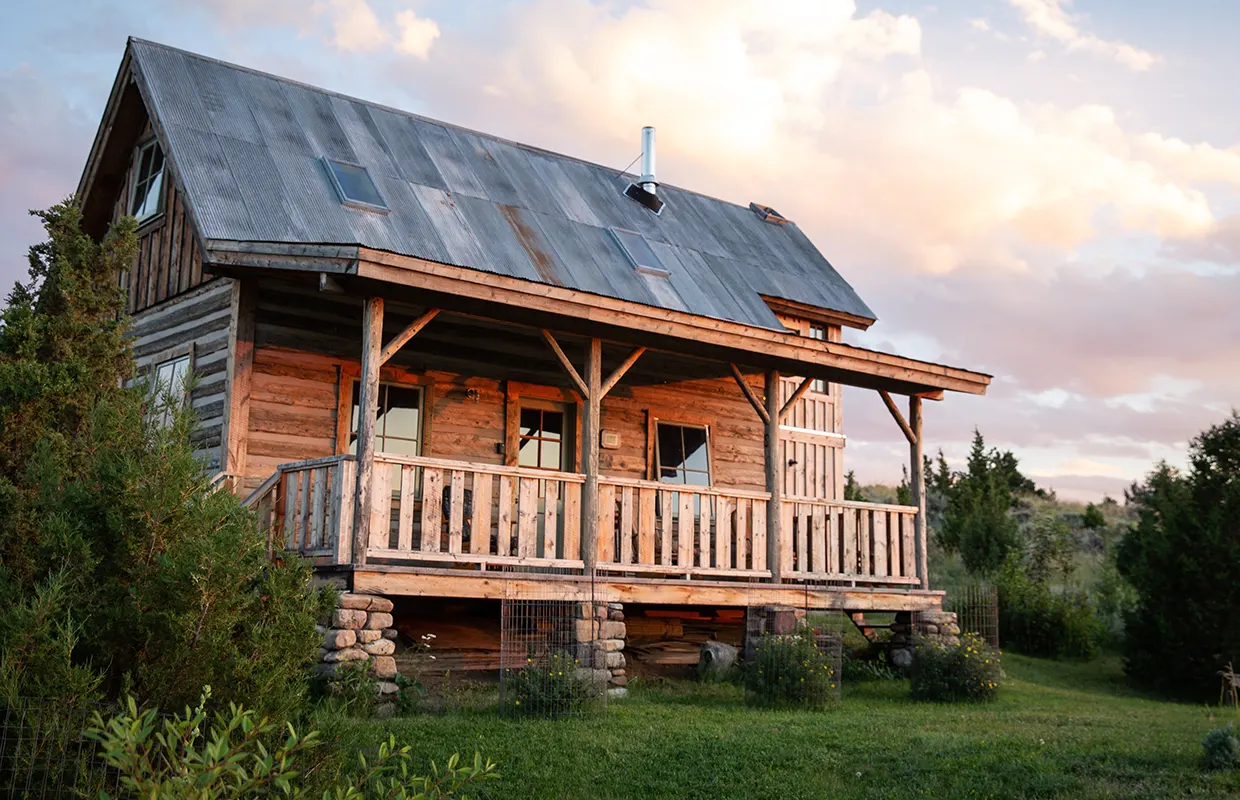Log rot and water infiltration are risks your log home can face. Maintenance, such as log home chinking and caulking, can help preserve your home. American Log Restoration Inc. offers log home repair services. Here are some tips for maintaining a log home to help extend its lifespan:
1. Seal Gaps With Log Home Chinking
Sealing gaps around doors, windows, and corners can help increase energy efficiency in your log home. This also protects your home from elements such as insects and the weather. Log home chinking and caulking materials are created to adapt to logs’ natural expansion and contraction, sealing gaps long-term.
Caulking should be used for small gaps that measure less than ¾ of an inch. For larger gaps, use chinking. You can also use chinking or caulking for natural cracks, or checks, in the wood if they run into a door or corner. Previously installed caulking or chinking may need to be updated over time to maintain weather seals.
2. Check the Wood and Gutters
Regularly checking the state of the wood and the gutters allows you to see if you are experiencing any log rot or leaks. When examining the logs of your home, look for:
- Visible signs of rot: Check under the windows and the base of your home for early signs of rot. Rotting wood is often soft or gray.
- Insect activity: Pests like carpenter ants or termites are attracted to rotting wood. Look for holes, sawdust piles, and visible insects among the logs.
- Unusual noises: During inspections, tap the logs with a hammer. If the wood sounds hollow, the log may be rotten.
Leaking downspouts and gutters can contribute to log rot. Check if your gutters are functioning properly by standing outside during an active rain storm. This is the best time to make sure your gutters are working properly. Gutters may overflow due to clogs or leaks at connection points. Debris should be removed, and gutters should be repaired to help safeguard against log rot.
If you find rot, log repair or replacement may be necessary to protect your home’s structural integrity. Label the rotting areas with tape and contact a log home repair company. American Log Restoration Inc. can assess and replace rotted wood to restore your home.
3. Apply Repellant To Prevent Insect Activity
Wood-boring insects, such as carpenter bees, drill holes in wood, damaging your home’s exterior. Preventative measures, like applying the correct pesticide or insecticide to the foundation and other appropriate areas, can help prevent extensive damage. Insecticides should target the specific type of pest you have. Reapplying pesticides regularly eliminates current pests and discourages their reappearance.
If you find signs of pests in the wood, use traps designed for the pest and destroy nests with an insecticide. For carpenter bees, stick a wire inside the holes you find to remove the larvae. Apply powder insecticides to the holes and fill them with wood putty to prevent insects from returning to their burrow.
4. Clean and Wash Your Home
Maintenance for a log home includes cleaning areas where mold growth may occur. Avoid using a half-and-half water and bleach solution to clean wood. Too much bleach can break down the wood’s protective stain. Instead:
- Remove any cobwebs with a duster or a paper towel first.
- Mix four gallons of water, one cup of bleach, and one cup of TSP to create a cleaning solution.
- Apply this solution to a soft brush and scrub any dark patches on the wood.
- After applying, rinse the area and let it dry.
- Leave the area alone for several days.
Use a log cleaning product solution and a low-pressure power washer or garden sprayer to wash your house every one to three years. This helps remove dust, pollen, dirt, and sap, protecting the finish of your home. Preventing airborne particles like pollen and dust from settling on the logs also helps prevent wood finishes from deteriorating.
5. Retouch the Log Stain
A protective stain helps prevent logs from absorbing water, extending their lifespan. It also discourages insects from boring into the wood. When staining your cabin, look for water-based latex stains designed for log homes. Darker stains help protect the wood from UV rays.
When performing maintenance, check your log stain to see if it needs to be retouched. Semi-transparent stains usually require maintenance services every three to five years, while solid stains can last seven to 10 years. To check the state of your stain, spray a bit of water on a log. Functional stain causes the water to bead and run off the logs. If the water is absorbed, retouch the stain after washing the house.
Find a Contractor for Log Home Repairs
American Log Restoration Inc. offers restoration services for log homes and cabins. We also provide thermal imaging services to determine where drafts enter the home to apply targeted sealing and repairs. We offer inspections and annual treatments. Contact us today to learn more about log home chinking and our log home services.
